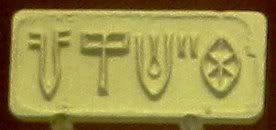The Biblical narratives are very clear about certain events like the Exodus, the origin of the Israelites, and Joshua’s military conquest of Caanan. There was a PBS documentary – Bible’s Buried Secrets (1, 2) – which found no evidence of Exodus, no evidence of Joshua’s conquest and that the Israelites were not migrants from outside, but natives of Caanan. Now the focus on the origins of Israel has shifted from the Late Bronze and Iron ages to the Persian period. According to one paper, “The earlier assumption that Israel emerged as a social entity before the 6th century b.c.e. has been labeled a ‘myth’. ”
The earlier assumptions are now being questioned because the biblical narrative was not able to withstand examination by archaeological data.
According to the PBS documentary, the Hebrew Bible was formed during the Babylonian exile.
Israelites were reminded that they had broke the covenant with God and hence were incurring his wrath. Still this was not taken seriously till the time the Babylonians exiled the Caananites. It was during this exile that one of the scribes of that era, known as “P”, took all the previous revisions and created the present version of the Bible. The documentary suggests that the Abraham story was created then, by this scribe, to enforce the concept of the covenant. The scribe lived in
Babylon and Abraham was placed in the nearby Ur; Abraham’s goal was to reach the promised land, so was the dream of the exiles. [Bible’s Buried Secrets (2/2)]
Some people think of this period as the origin of Israel, but a new paper on the Persian origins makes it clear on what exactly happened after the exile.
Yahwism after the Exile experienced discontinuity of iconographic practices and matured as it consolidated its sacred literature.Stern (2001: 29) insists that “upon the return from exile, the Jews purified their worship. Jewish monotheism was at last consolidated.” This assumes that there were no iconographic representations of Yahweh
after the Babylonian deportation. The archaeological and textual evidence supports pentateuchal Yahwism as the official, normative religion that was practiced by the majority, even though there are some iconographic representations from the Persian period that require more detailed discussion. The Persian period seems to be the time when the prohibition on representation of Yahweh was particularly widespread. Pentateuchal Yahwism thrived and became the norm that would be followed by the world’s major religions: Judaism, Christianity, and Islam. [The Persian Period and the Origins of Israel: Beyond the “Myths”]



